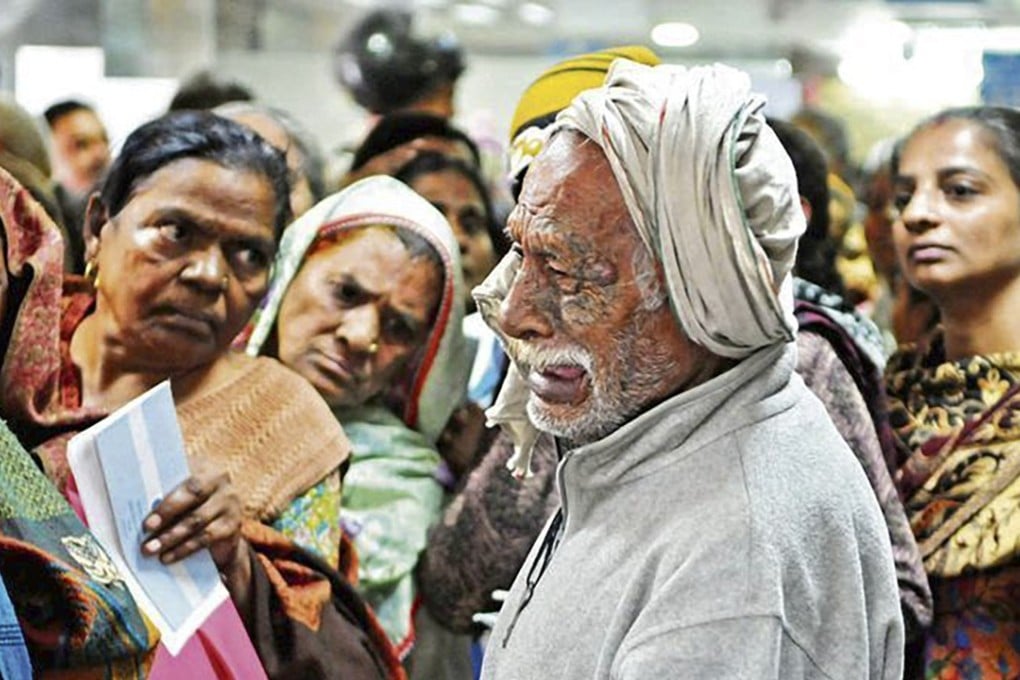Withdrawal symptoms: cash is still king in India, Modi not so much
Indian prime minister had promised to rescue the economy, now the economy needs to rescue him

All Nand Lal wants out of life is death. A good part of the 80-year-old retired soldier’s 10ft by 10ft tumbledown room on the outskirts of New Delhi is a humble home shrine of two idols of Hindu gods on a tattered piece of red cloth. Lal, a widower, lives in this rented room in a small house tucked away in a dingy lane all by himself, dependent on a part-time maid for the smallest of chores. Barely able to walk, see or hear, he spends most his days praying to those gods to end his misery.
A year ago, Lal became the face of the havoc unleashed by Indian Prime Minister Narendra Modi’s shock decision to withdraw high-denomination banknotes from circulation. As some 86 per cent of the cash in circulation was declared void overnight in a cash-driven economy and a fraction of it replenished with new legal tender, millions of Indians found themselves standing in long bank lines for weeks to exchange their liquid holdings for legitimate banknotes. After three days of queuing in vain, Lal broke down when he lost his spot in a queue on the fourth day. As he tearfully begged bank officials to allow him to withdraw his pension, the pain and helplessness on his face was captured in a photo taken by the Hindustan Times newspaper. It instantly went viral as a symbol of the hardship inflicted by demonetisation, as the currency ban is called in India.
Modi’s key aide blames poor planning for India’s currency crisis
“I don’t want to live another single day, I’ve suffered enough,” Lal says often as we talk in his gloomy neon-lit room. But his face lights up when asked about demonetisation. The social media fame brought by that photo means he doesn’t have to queue up any longer. These days when his maid takes him to the bank, he is given a seat and the bank officials do the rest – a big deal in a public sector Indian bank. “Thanks to you journalists, I have no bank problems now,” he says, hands folded in a gesture of appreciation.
Lal may be one of the very few people for whom demonetisation actually worked out, even if in a perverse way. As evident from nationwide opposition protests this week to mark the anniversary of the currency ban, endless media coverage of its impact, and the disdain and anger that any mention of the note ban often evokes in casual conversations, it rankles for the most part.
A poorly designed and executed nationwide goods and services tax (GST) that followed in the wake of the note ban only worsened its pain. India’s growth rate slowed down as a result of the disruption caused by the twin policy shocks. For many Indians, the note ban has thus become shorthand for Modi’s mismanagement of the same economy he had promised to turn around, severely denting his image as a smart economic manager. Modi had tried to kill cash with the note ban. A year on, cash remains king in India – it’s Modi’s reign that appears under threat, with his aura of infallibility on the wane.
PROMISES, PROMISES
When Modi announced on the evening of November 8, 2016, that he was pulling 500 rupee (US$7.7) and 1,000 rupee notes, he laid out two main purposes: to eradicate “black money”, or unaccounted wealth in local parlance; and wipe out terror financing through counterfeit notes. It was an odd rationale as a fraction of ‘black money’ is held in cash, most of it being parked in more productive assets such as property or gold, or funnelled abroad through the grey market. Counterfeits, similarly, make for a fraction of the money in circulation.
